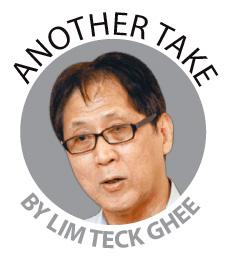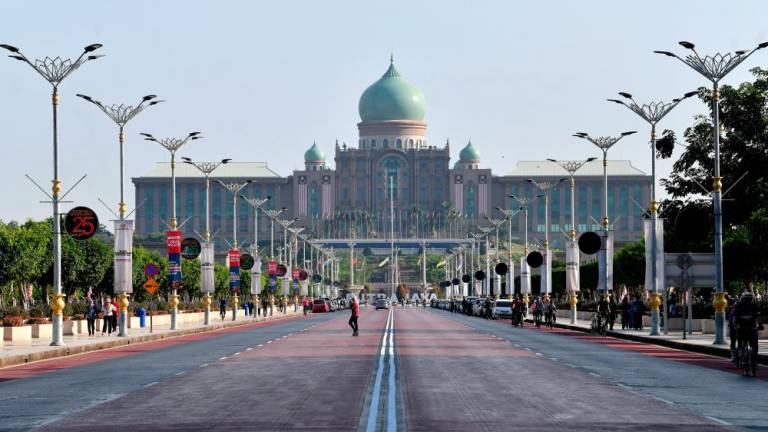AS the Communist Party of China (CPC) marks its 100th anniversary, China and its supporters around the world have cause to celebrate.
Perhaps the most important reason is the ability of the party and the nation’s citizens to hold the country together, and preserve its sovereignty and independence despite the efforts made to divide, fragment and subjugate it in the way that other Afro-Asian and Latin American nations have experienced.
Difficult challenges still lie ahead. Some are of the CPC’s own making. Others stem primarily from the West’s fear of a non-white nation that has been able to lift its people in less than a generation from a ruinous state to its present position as a thriving country and global power.
China’s successful model of development and governance – if it is replicated by other nations – may provide an alternative to the long-standing dominance of the West and its allies in the global economy and world’s political systems.
Hence, we can expect greater demonisation of this non-Western upstart and a daily dose of anti-China propaganda to warn the rest of the world to stand together with the West and its “rules-based democratic allies” – despite their blood-stained and exploitative record – against an authoritarian regime.
The change in the United States’ view of China from that of a “crucial partner” to a “number one threat” status, occurring within the last five years, says it all about how China’s successful development is now seen as detrimental to Western neo-colonialism and its domination of the world system.
Meanwhile, the road ahead for China to succeed is still a long one. My observations from a trip 10 years ago remain unchanged for China’s development and the continuing long march ahead.
Excerpt from Shanghai Rising, Nov 10, 2010
During eight days of the last two weeks, I have been in Shanghai and Xiamen. This was my first trip to China in 15 years. Although I had read of and seen over television the many changes and developments taking place there especially in the past decade, I was not prepared for the new China that is transforming itself and its people, literally, by the hour.
The first surprise was arrival at Shanghai’s Pudong International Airport. Opened just over 10 years ago, this is an enormous airport which is already the third busiest in the world in terms of freight traffic. Expectations are that it will be the busiest in the world for freight and passenger traffic in a few years time.
The second surprise was the Shanghai Maglev train which runs from its station situated between the two passenger terminals to downtown Pudong. This – the world’s first commercial maglev service – whisked us to the city centre in seven minutes and reached a top speed of 431km an hour. My team had barely enough time to sit down and make ourselves comfortable before we arrived at Longyang station in the city centre.
What was apparent within the hour after landing in Shanghai is the efficiency and meticulousness with which China is developing its human resources; and the way in which science and technology are being used to improve the lives of the largest mass of humanity on earth.
Shanghai itself has more than 20 million inhabitants. Think of a city in which three quarters of Malaysia’s total population is being cramped into, and the need to organise the lives of these people and provide them with jobs, housing, social services, transport and the other amenities of city life. This will provide some idea of the scale of development and mammoth and unprecedented challenge that China faces. It is one which many developing countries are also facing.
Mind-boggling scale of development needs
This ability to organise a huge number of people towards a common end was perhaps best exemplified by a trip to the Shanghai World Exposition. This is a giant fair in which at its peak over one million people enter over a 12-hour period to spend the day.
Consider the precision and management needed to provide tickets, stands, food, toilets, health facilities, and transport, for one million people. And to handle this logistical nightmare over a six month period – it is estimated that more than 70 million people will have attended the Exposition before it ends.
The lasting impression for me is of remarkable exhibits and memorable sights in an environment of cheerfulness and goodwill, whilst standing in the longest orderly queues that anyone could imagine.
It is not just the scale and breakneck economic development that is staggering. It is also the vibrancy of the cultural and everyday life – at least as it was found in Nanjing street, the Bund area and the neighbourhood of Xin Tian D.
In old Shikumen, we gawked at a restoration programme that has breathed new life into old dilapidated buildings transforming them into restaurants, boutiques, and arts and crafts shops.
Xin Tian Di is perhaps the finest example of historical urban redevelopment in our region. The locals point out that the preservation and cultural renaissance of this historic area is due to the birth of the Chinese Communist Party in one of the old buildings found in the area.
The permit for development of the area carried a stipulation that the building where party leaders met to discuss their plans for the rebirth of China had to be preserved.
Today, this museum piece building – the First Communist Party Hall – ironically stands in the centre of what is probably the icon of bourgeoisie and capitalist high life in China.
Long way still for China
Undoubtedly, there is still a long way for China to go before it is a highly developed country and many things can go wrong. Much of China and the Chinese people are still poor.
However, one of the indelible impressions from the trip is of the sense of confidence amongst ordinary people that their lives have improved and will continue to improve, and of the country’s ability to forge ahead. Indeed, China’s top think-tank, the Chinese Academy of Social Sciences now estimates that China will be the second most powerful nation by 2050.
What is noticeable about the report is that it also does not mince words about the limitations of China. The same report warned that China’s core competitiveness could not match its ranking when it comes to high-level talents, culture, education, health, science and technology.
For example, China’s index of high-level talents stands at 8.3% of that of the US and 10% of that of Japan, indicating a big gap in the human resources sector.
In the field of higher education, China’s index is only 10% of that of the European Union and one third of the US. Though China ranked 4th in higher education competitiveness in 2008, most of the first class universities are still in the European Union and the US.
The report also said that the country’s science and technology competitiveness index is less than one third of that of the US. There are 329 famous institutions of science and technology in the US while China has only 61.
Especially instructive was the way the report contained positive and negative data on China’s accomplishments and shortcomings. Carried in China’s top English language paper, China Daily, the report did not engage in spinning the ranking data or in questioning the methodology of ranking – the way in which some universities do so whenever any news of their institution’s low international ranking appears in the media.
In some ways, the Chinese system and media – though embedded in a one party state system – is more independent and critical of their policies and system of government than in some democratic countries of the world.
Lim Teck Ghee’s Another Take is aimed at demystifying social orthodoxy.
Comments: letters@thesundaily.com













